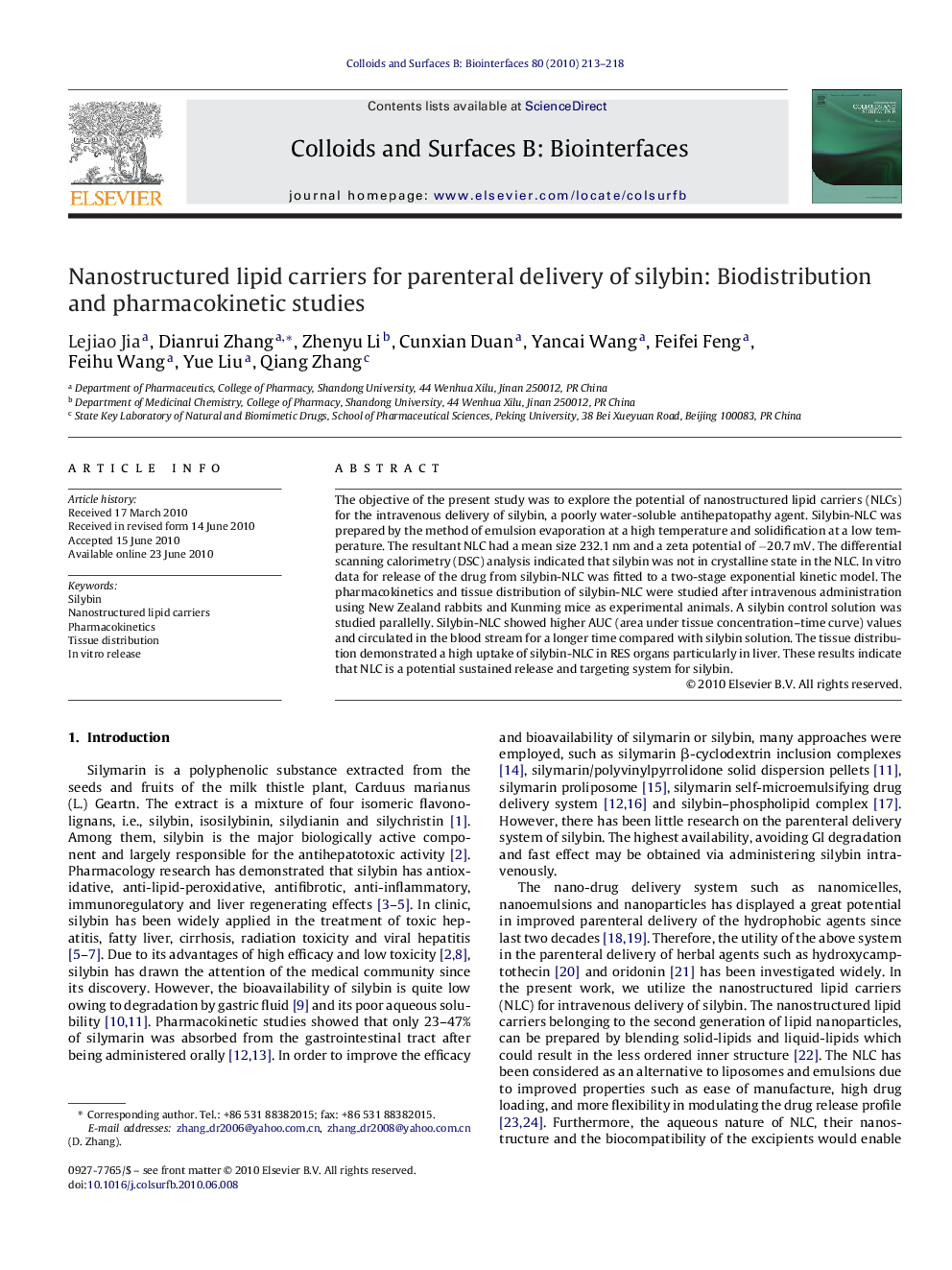| کد مقاله | کد نشریه | سال انتشار | مقاله انگلیسی | نسخه تمام متن |
|---|---|---|---|---|
| 601788 | 1454316 | 2010 | 6 صفحه PDF | دانلود رایگان |

The objective of the present study was to explore the potential of nanostructured lipid carriers (NLCs) for the intravenous delivery of silybin, a poorly water-soluble antihepatopathy agent. Silybin-NLC was prepared by the method of emulsion evaporation at a high temperature and solidification at a low temperature. The resultant NLC had a mean size 232.1 nm and a zeta potential of −20.7 mV. The differential scanning calorimetry (DSC) analysis indicated that silybin was not in crystalline state in the NLC. In vitro data for release of the drug from silybin-NLC was fitted to a two-stage exponential kinetic model. The pharmacokinetics and tissue distribution of silybin-NLC were studied after intravenous administration using New Zealand rabbits and Kunming mice as experimental animals. A silybin control solution was studied parallelly. Silybin-NLC showed higher AUC (area under tissue concentration–time curve) values and circulated in the blood stream for a longer time compared with silybin solution. The tissue distribution demonstrated a high uptake of silybin-NLC in RES organs particularly in liver. These results indicate that NLC is a potential sustained release and targeting system for silybin.
Journal: Colloids and Surfaces B: Biointerfaces - Volume 80, Issue 2, 15 October 2010, Pages 213–218